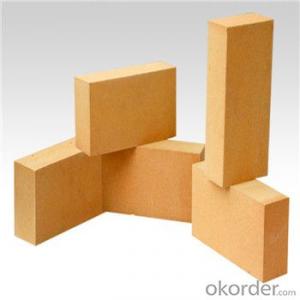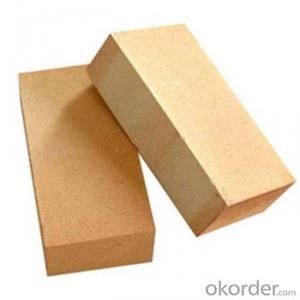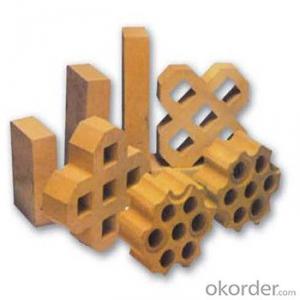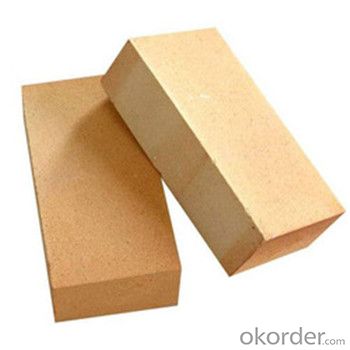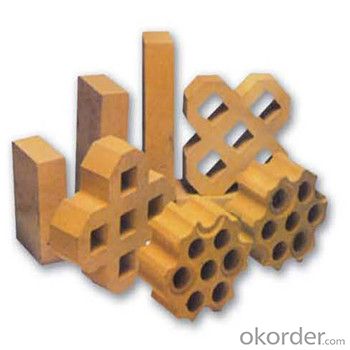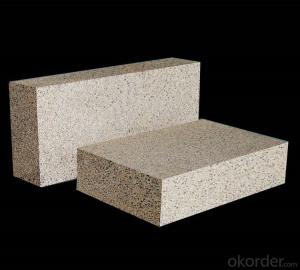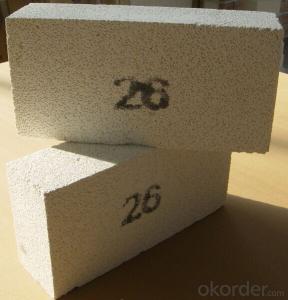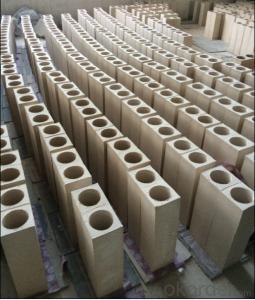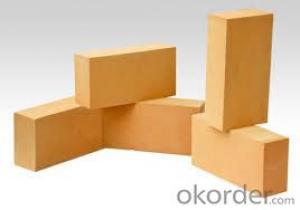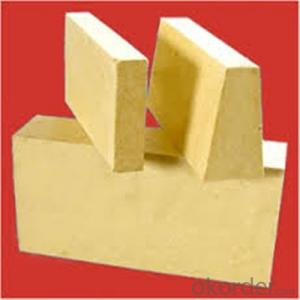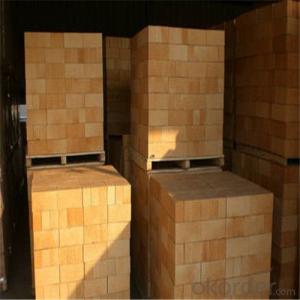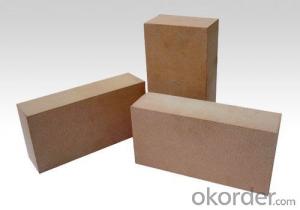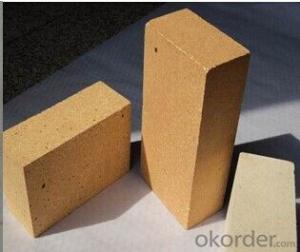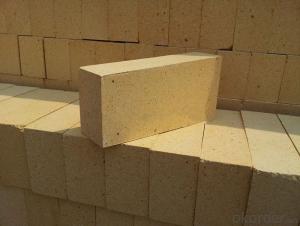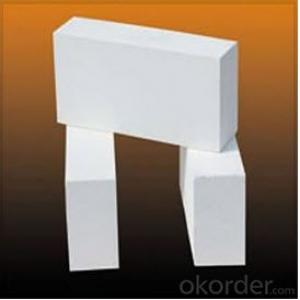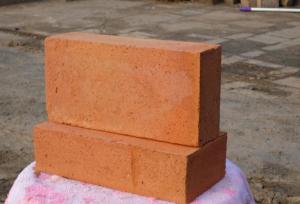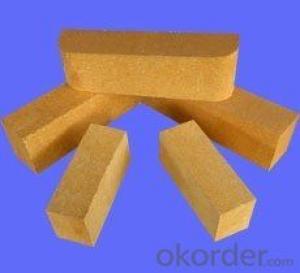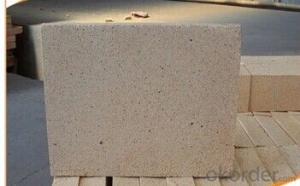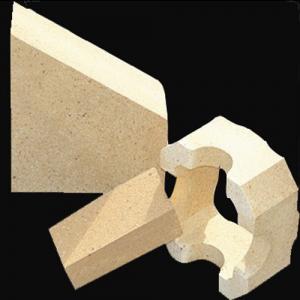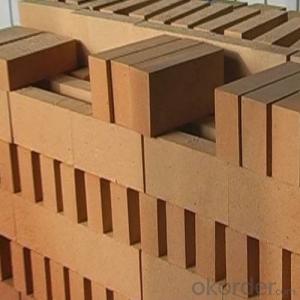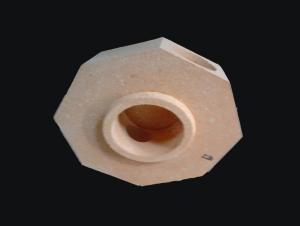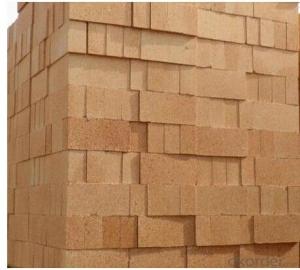Fireclay Brick - Low Porosity Refractory Clay Brick
- Loading Port:
- China main port
- Payment Terms:
- TT OR LC
- Min Order Qty:
- 100 kg
- Supply Capability:
- 2000000 kg/month
OKorder Service Pledge
OKorder Financial Service
You Might Also Like
High alumina fireclay Brick
High alumina fireclay Brick for Heating Furnace is a kind of insulation material adopting organic matter as ignition loss substance in order to increase the porosity of refractory, which has such advantages as high porosity, small volume density, good insulation effect, high mechanical intensity, small thermal conductivity and long service life. For various industrial kilns & furnaces, it is a kind of essential refractory for energy saving and temperature preservation.
This series of High Alumina fireclay Brick for Heating Furnace are made of selected high alumina bauxite, kaolin caly, hollow microsphere as the mian material.By shaping at high pressure and sintering at high temperature.
Fireclay brick is shaped refractory product.It is made from flint clay clinker and binder , Through high heat sintering. The Al2O3 content range from 28% to 48%.The refractoriness range from 1580°C to 1750°C(SK-30.SK-32.SK-34.SK-35).
Product Applications:
High alumina fireclay Brick are ideal for use in the below applications
Furnaces of metallurgy industry, heat treatment furnace
Furnaces of chemical industry and construction industry.
Furnace of incineration of garbage, recirculating fluidized bed furnace
Standard sizing: 230 x 114 x 65 mm others up to the client
Product Advantages:
CNBM has success in its Fireclay brick due to their cost-effectiveness and excellent insulating properties. CNBM also has experience in ceramic fiber blankets application and would like to assist you in product selection, system design, and installation techniques.
Main Product Features:
High refractoriness,High-temperature endurable .
Good corrosion resistance.
Good spalling resistance and wear resistance.
Good thermal shock resistance.
High mechanical strength.
High-temperature creep rate is low.
Good volume stability at high temperature.
Product Specifications:
ITEM | UNF42 | UNF46 | ZGN42 | RN40 | TDL45-12 |
Refractoriness, ℃ | 1730 | 1750 | 1750 | 1730 | 1760 |
Bulk Density, g/cm3 | 2.15 | 2.25 | 2.3 | 2.15 | 2.37 |
Apparent Porosity, % | 22 | 20 | 15 | 24 | 12 |
C.C.S, Mpa | 30 | 35 | 58 | 28 | 68 |
Refractories Under Load (0.2Mpa),℃ | 1400 | 1420 | 1450 | 1430 | 1500 |
Reheating Linear Change, % | 1400℃x2h 0.1~-0.4 | 1430℃x2h 0~-0.1 | 1450℃x2h 0~-0.2 | 1350℃x2h 0~-0.3 | 1450℃x2h -0.1~+0.05 |
Al2O3 Content , % | 42 | 46 | 42 | 40 | 45 |
Size :
Common sizes
Straight type | Arch type | Wedge type |
L×W×H (mm) 230×114×65 230×114×75 230×114×32 220×110×60 220×110×50 220×110×40 220×110×30 | L×W×H/h (mm) 230×114×65/55 230×114×65/45 230×114×65/59 220×110×65/50 220×110×75/65 220×110×60/40 | L×W×H/h (mm) 230×114×65/55 230×114×65/45 220×110×75/65 220×110×60/40 |
Other sizes according to customer requirements | ||
FAQ:
Q1: How about your factory’s annual production capacity?
A1:CMAX annual production is about 310,000Tons.
Q2: How many production lines of your factory?
A2:CMAX has 26 production lines, including eight silicon bricks lines, and each one of mullite brick, high alumina brick, insulating brick and monolithics line.
Q3:How large the scale of your factory?
A3: CMAX covers almost 200,000 Square meters, including plant area of 180,000 square meters.
Q4: What’s your factory’s product scope?
A4:CMAX main products are: refractory for hot blast stove, refractory for coke oven, refractory for glass kiln, refractory for carbon calcining furnace, refractory for acid pickling line, refractory for cement kiln, refractory for blast furnace, refractory for nonferrous metal furnace, and basic refractory raw materials.
Product Picture
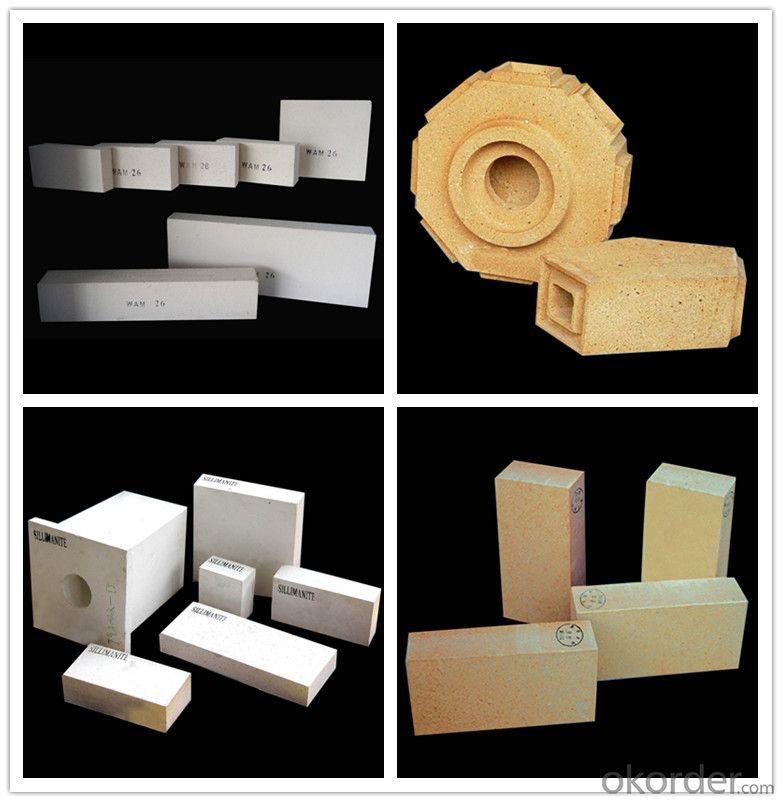
Produce Processing
Crushing
In this stage massive raw materials which have been stored, are ground and classified into proper sizes, making them easier to shape.
Mixing
The prescribed size of ground raw material is weighed and mixed into a designated amount of water and forming agent.
Shaping
The mixture is then poured into a mold to form shapes, and the pressure is high.
Drying
In this stage water is removed from the shaped bricks. This helps preventing the bricks from deforming or cracking which may result due to the rapid evaporation
Firing
This is the most crucial process in refractory manufacturing. The modeled bricks are fired at high temperature to complete their thermochemical reaction so that they do not deform.
Inspection
The bricks' physical and chemical properties are inspected very carefully by rigid quality management procedures.
Packing shipment
We guarantee efficient delivery every time.
Packing
We also supply (Click on following picture if interested):
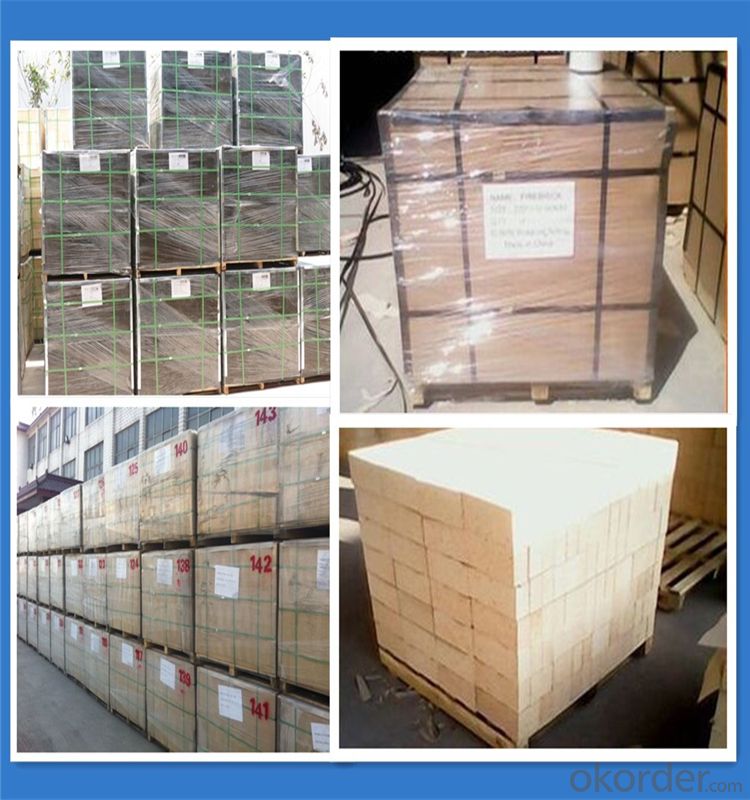
- Q: What material is sk-34 on the refractory brick
- Electric power; refractory bricks, castable refractory, building materials, chemical, glass, ferrous metals and other industries required refractory and insulation materials, all kinds of thermal insulation cotton products, thermal insulation brick, aluminous refractory cement, perlite and other unshaped refractory materials have been the best-selling products
- Q: Why should the clay bricks be watered first when they are building masonry walls?
- Sintered clay brick because there are a lot of capillary, in the dry state water absorption ability is very strong, if you don't use water, water in the mortar will soon be sucked out of the brick, mortar workability is reduced, operation is difficult to spread the real tile.
- Q: The renewal of refractory brick internal the lime kiln belongs to overhaul. In the absence of production, are the replacement of valve and sporadic projects also considered overhauls? Or routine maintenance!
- The replacement of fire brick is a major overhaul. If the part causes the furnace shutdown, which is also a major overhaul, so the key of overhaul is depends on what reason it is
- Q: What's the price of clay bricks?
- Clay brick in the fast price of 2.4 yuan or so, the price of 650-800 yuan per ton. Mainly depends on the amount of aluminum. Clay brick consists of heavy clay brick and light clay brick.
- Q: what kind of refractory brick is suitable for 1300 degrees converter?
- magnesia-carbon brick, you can also use MgO-Al2O3 castable, it is good too.
- Q: Why is the brick instead of solid clay brick
- Shale has the characteristics of high temperature resistant, is fire gangwa, pottery, porcelain power the best materials, especially shale burning system with shale brick is a new type of environmentally friendly building materials, has become the main building material to substitute for clay brick, high economic and social benefits, the market prospect is broad, is the best raw material for production of high hollow brick wall the quality of the.
- Q: Do refractory bricks insulate heat?
- It can not be generalized, generally, the insulation performance of clay is not good, but the hollow is good, such as light mullite bricks have good insulation. it depends on what kind of refractory brick
- Q: What is sintered non clay brick?
- According to the production process can be divided into sintered brick and non sintered brick, in which non fired brick can be divided into compressed brick, steam brick and autoclaved brick, etc., according to whether or not the hole can be divided into ordinary brick, porous brick, hollow brick.
- Q: How to make refractory bricks? ? ?
- Solution of the production of refractory brick raw materials
Send your message to us
Fireclay Brick - Low Porosity Refractory Clay Brick
- Loading Port:
- China main port
- Payment Terms:
- TT OR LC
- Min Order Qty:
- 100 kg
- Supply Capability:
- 2000000 kg/month
OKorder Service Pledge
OKorder Financial Service
Similar products
Hot products
Hot Searches
Related keywords
